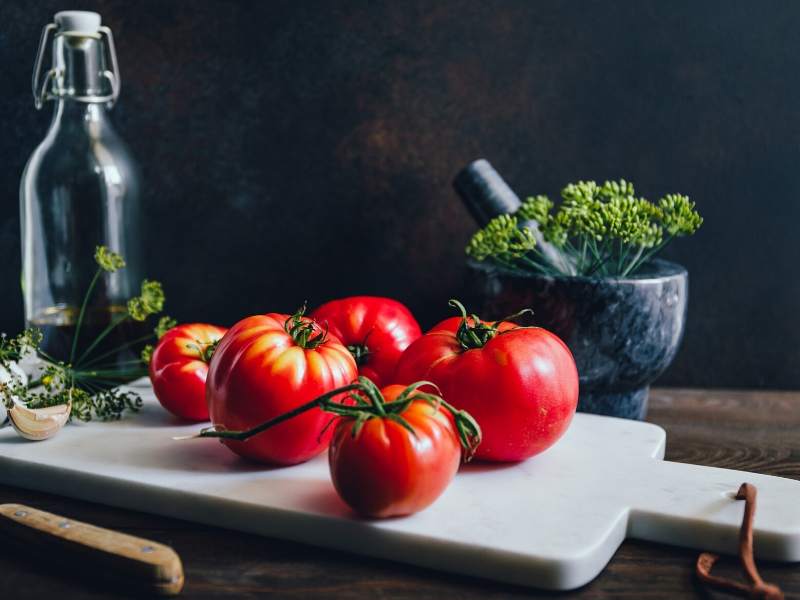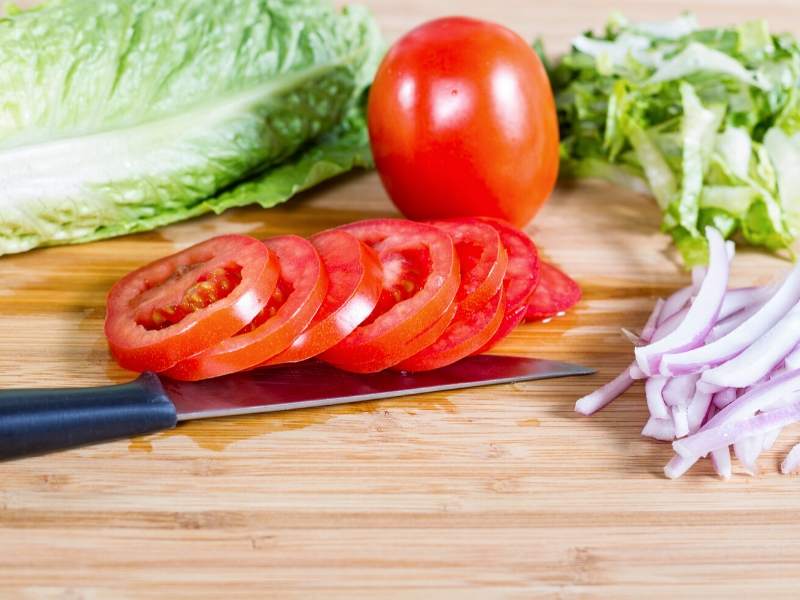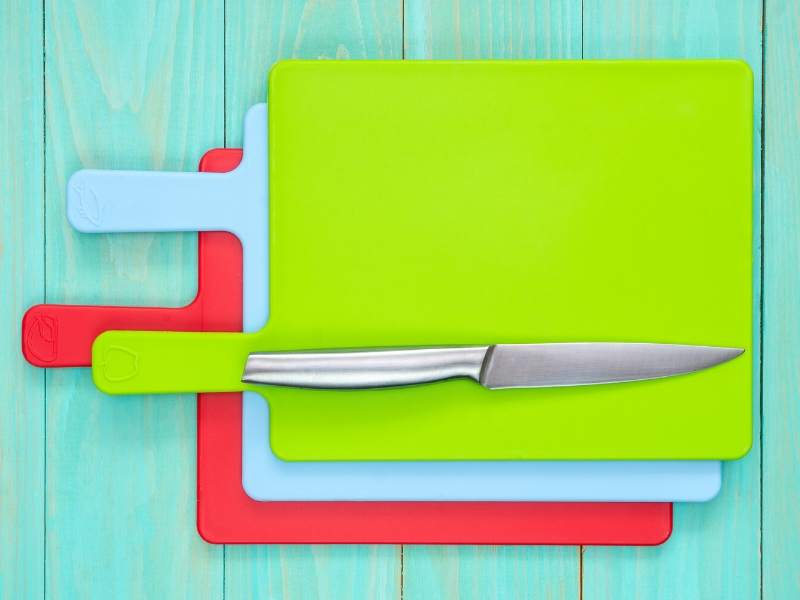Whether you’re a home cook or a professional chef, your cutting board is one of the few tools that’s with you every step of the way. And while it may seem weird, what your cutting board is made of makes a difference in how you dice, slice, mine, carve, chop and anything else. Today, we’ll look at the different materials cutting boards are made of and the pros and cons of each.
Cutting Board Material • The Pros & Cons
Marble and Glass

Perhaps the least favorable (but most visually appealing) are your glass and marble boards. Depending on the make of the board, more often you’ll find marble cutting boards and glass boards that are intricately designed and meant to be beautiful centerpieces for your countertop. They do also have some benefits in their form and function as well. As a highly dense surface, glass and marble boards don’t need to be seasoned like wood boards, and they can be easily washed in the dishwasher.
Unfortunately, that’s where the benefits end. The same density surface that makes them low maintenance also makes them potentially hazardous to both your knives and to your hands! Glass and marble boards don’t absorb any of the impacts from the force of your knife cut, and this force goes back into your blade to cause dulling and potentially chipping of your blade. In some cases, this force also causes you to lose control of the knife cut and to risk cutting yourself.
Wood and Bamboo

Bamboo and wooden boards are interesting and exquisite material for cutting boards. Both are renewable materials that bring with them plenty of highly beneficial properties from the natural world into your cutting board. For example, both bamboo and wood have natural antimicrobial properties that help prevent the spread of harmful foodborne bacteria on your cutting board and ultimately into your food. As a semi-porous surface, woods – especially species like walnut, teak, cherry, and acacia – also offer a forgiving and safer surface for both your knives and your hands. Wooden cutting boards absorb more of the force from a knife cut into the fibers and grains, giving you a little more give and more room for controlling where exactly your knife cut is going.
Wood and bamboo, however, do need some more attention to their upkeep than other boards. Whereas glass and plastic boards can be put in the dishwasher with little extra thought, wood and bamboo boards need to be seasoned regularly in order to rehydrate the fibers and to maintain so many of the natural and beneficial qualities that the boards come with.
Plastic

There are a lot of reasons why plastic boards are the most common and popular option for a cutting board material. They are relatively inexpensive, lightweight and easy to move around. Like glass boards, plastic boards can be washed in the dishwasher easily, but unlike glass boards, they are more forgiving to your knives like wooden boards are. What makes plastic boards also very appealing is that they don’t require seasoning like wooden boards.
The only downside, however, is that it’s still unclear how effective plastic boards are at keeping harmful food bacteria like E.Coli and salmonella at bay. A study done at UC Davis showed that plastic boards with deep knife marks were more likely to harbor harmful bacteria than their wood counterparts. This has led to the recommendation that plastic boards may be best suited for cutting vegetables, herbs and more but not necessarily for higher risk foods like raw meats.
Final Note
In the end, what matters most is that your cutting board of choice brings joy to your cooking and to your kitchen. The above considerations are only to help you find the right fit for you but don’t lose sight of what makes you happy when you cook and how your choice in cutting board is a reflection of that. Check more tips for seasoning your cutting board on Arousing Appetites blog
Enjoy, and happy cooking!
Images Courtesy of Canva.
Other Posts You Might Enjoy:
The Open Kitchen Concept: Designing the cooking Zone





